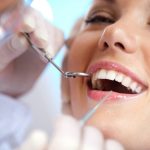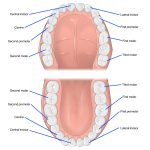Effortlessly Remove Stains from Bonded Teeth at Home: Expert Tips
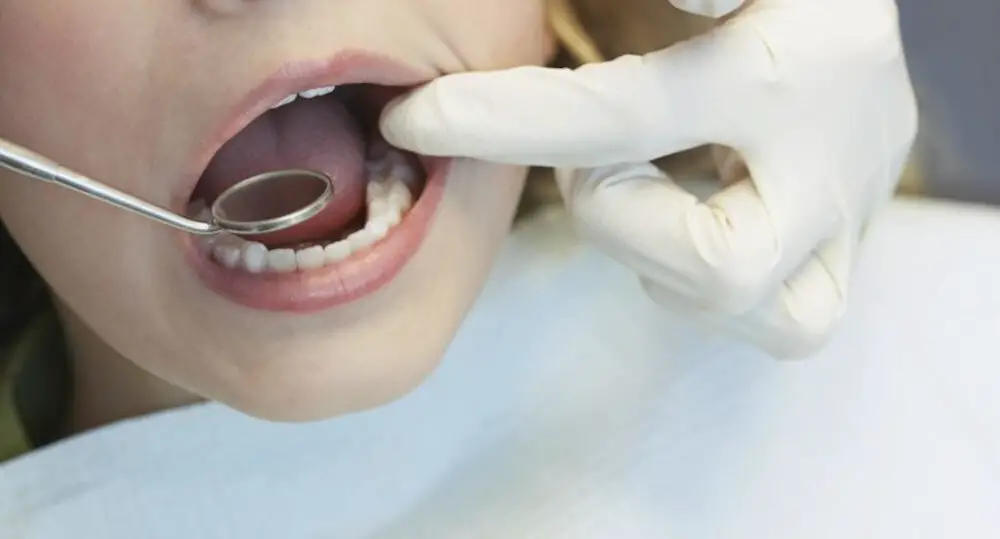
A bright smile is undoubtedly a powerful tool for leaving a lasting impression. However, even with regular brushing and flossing, maintaining the pearly whites can be challenging, especially when it comes to stubborn stains on bonded teeth. Bonded teeth are a popular cosmetic dental procedure where a resin material is used to cover the teeth, fixing chips, and discolorations, and improving the overall appearance. But just like natural teeth, bonded teeth are susceptible to discoloration and staining, leaving many people wondering how to keep them looking their best. Luckily, there are expert tips and tricks that can help effortlessly remove stains from bonded teeth at home. Before delving into the tips, it is essential to understand the causes of bonded teeth stains. There are several reasons why bonded teeth may become discolored over time, including consuming dark-colored foods and drinks, smoking, or poor dental hygiene. Stains can also occur due to the bonding material’s natural wear and tear or damage. Regardless of the cause, it can be disheartening to see your once-bright teeth lose their shine. But with the right techniques and a little bit of effort, you can remove these stains and achieve a brighter, healthier-looking smile. So, let’s explore some expert tips that can help you remove stains from bonded teeth at home.
Bonded teeth are teeth that have undergone a cosmetic procedure where a composite resin material is applied to the surface of the tooth and then hardened with a special light. This process is often used to fix chipped or broken teeth, close gaps between teeth, and improve the appearance of discolored or stained teeth. However, over time, bonded teeth can still become stained, especially if they are exposed to certain foods, drinks, or habits like smoking. These stains can be unsightly and difficult to remove with regular brushing and flossing. Therefore, it is important to take extra care when cleaning bonded teeth to ensure they stay looking their best.
Maintaining proper dental hygiene is crucial for a healthy mouth and overall well-being. Neglecting dental care can lead to a host of problems, including tooth decay, gum disease, bad breath, and even tooth loss. Brushing and flossing regularly, along with routine dental check-ups, can prevent these issues from developing in the first place. It’s also important to avoid habits that can harm your teeth, such as smoking or excessive consumption of sugary or acidic foods and drinks. Investing time and effort into maintaining good dental hygiene can save you from pain, discomfort, and costly dental treatments in the long run.
Causes of Stains on Bonded Teeth

Bonded teeth refer to the dental bonding procedure where composite resin is applied to the surface of teeth to improve their appearance. Although dental bonding is a popular cosmetic procedure, it is not immune to staining and discoloration. The causes of stains on bonded teeth can vary from poor oral hygiene to lifestyle habits, but all can affect the appearance of the teeth and reduce the effectiveness of the bonding. One common cause of staining is the consumption of dark-colored foods and drinks such as coffee, tea, red wine, and berries. These substances contain chromogens that easily stick to the bonding material and cause discoloration over time. Smoking and other tobacco products also contribute to the staining of bonded teeth. The tar and nicotine present in tobacco smoke can cause yellowing of the teeth and make the bonding material appear darker than the natural teeth. Another cause of staining on bonded teeth is poor oral hygiene. Failure to brush and floss regularly can lead to the buildup of plaque and tartar on the teeth, which can cause discoloration and staining of the bonding material. People who have a history of gum disease or tooth decay are also at risk of staining on their bonded teeth. The bacteria that cause these conditions can break down the bonding material and make it more susceptible to staining. Additionally, certain medications such as antibiotics and antihistamines can cause tooth discoloration, including the bonded teeth. It is essential to maintain good oral hygiene and avoid lifestyle habits that can contribute to staining to keep bonded teeth looking their best.
Food and drinks can cause stubborn stains on bonded teeth, making it challenging to maintain a bright and healthy smile. Dark-colored beverages like coffee, tea, and red wine contain chromogens that adhere to the tooth surface, resulting in deep-set stains. Additionally, acidic drinks like citrus juices, soda, and sports drinks can erode the protective enamel layer, leading to discoloration and sensitivity. Foods such as berries, tomato sauce, soy sauce, and curry can also cause staining due to their high pigmentation and acidic nature. To prevent and remove stains from bonded teeth, it’s essential to practice good oral hygiene and limit the consumption of these staining foods and drinks.
Although it may seem unrelated, smoking and tobacco use can actually be a contributing factor to stained teeth. The tar and nicotine found in cigarettes can cause yellowing and discoloration of the teeth over time. Additionally, smoking can lead to gum disease and tooth loss, which can further impact the appearance of the teeth. Quitting smoking and tobacco use can not only improve the overall health of an individual, but also lead to a brighter and more attractive smile. There are many resources available to help individuals quit smoking, including nicotine replacement therapy and support groups.
Poor dental hygiene is a major contributor to stained and discolored teeth. Neglecting to brush and floss regularly can lead to a buildup of plaque and tartar, which can cause teeth to appear yellow or brown. Additionally, consuming certain foods and drinks, such as coffee, tea, and red wine, can further stain teeth and worsen the problem. It’s important to establish a daily oral hygiene routine and visit the dentist regularly to maintain a healthy and bright smile. By taking care of your teeth and avoiding habits that can cause staining, you can keep your teeth looking their best and boost your confidence in your smile.
Home Remedies for Removing Stains on Bonded Teeth

Bonded teeth are a popular cosmetic dental treatment that can help to restore the appearance of discolored teeth. However, over time, bonded teeth can become stained or discolored due to various reasons such as smoking, drinking coffee, tea, or red wine, or poor oral hygiene. Fortunately, there are several home remedies that can be used to remove stains on bonded teeth without the need for expensive dental treatments. One of the most effective remedies is baking soda. Baking soda is a natural teeth whitening agent that can help to remove surface stains on bonded teeth. Simply mix a small amount of baking soda with water to create a paste and brush it onto your teeth for a few minutes. Then rinse your mouth thoroughly with water. Repeat this process once or twice a week to see noticeable results. Another effective home remedy for removing stains on bonded teeth is apple cider vinegar. Apple cider vinegar is a natural teeth whitener that can help to remove surface stains and kill harmful bacteria in the mouth. Simply mix equal parts of apple cider vinegar and water and swish the mixture around in your mouth for a few minutes. Then rinse your mouth thoroughly with water. Repeat this process once or twice a week to see noticeable results. However, it is important to note that apple cider vinegar is acidic and can erode tooth enamel if used excessively. Therefore, it is recommended to use this remedy in moderation and to rinse your mouth thoroughly with water after use.
Brushing and flossing are essential techniques for maintaining good oral hygiene and removing stains from bonded teeth. When brushing, it is recommended to use a soft-bristled toothbrush and fluoride toothpaste, gently brushing in circular motions for at least two minutes. Flossing should be done at least once a day, using a gentle sawing motion to remove any food particles or plaque between teeth. For those with bonded teeth, it is important to pay extra attention to the bonding area when brushing and flossing, using a gentle touch to avoid damaging the bonding material. By incorporating these techniques into your daily oral care routine, you can effortlessly remove stains from your bonded teeth and keep your smile healthy and bright.
Baking soda and hydrogen peroxide are two common household items that can be used to effortlessly remove stains from bonded teeth at home. Baking soda is a mild abrasive that can effectively scrub away surface stains on teeth, while hydrogen peroxide is a bleaching agent that can whiten teeth by breaking down the molecular bonds of staining compounds. To use these ingredients, mix a small amount of baking soda with hydrogen peroxide to form a paste, apply the paste to the teeth and let it sit for a few minutes before rinsing thoroughly. However, it’s important to note that excessive use of baking soda and hydrogen peroxide can damage the enamel of teeth, so it’s best to consult a dentist before attempting this method of teeth whitening.
Oil pulling is a centuries-old Ayurvedic practice that involves swishing a tablespoon of oil in your mouth for 10-20 minutes daily. The oil is believed to pull out toxins and impurities from the body, improve oral health, and whiten teeth naturally. Coconut oil is a popular choice for oil pulling due to its antibacterial and anti-inflammatory properties. However, other oils like sesame or sunflower oil can also be used. It is important to spit out the oil after swishing and rinse your mouth thoroughly with water. While oil pulling may not be a magic solution for removing bonded teeth stains, it can be a helpful addition to your oral hygiene routine.
To maintain the brightness of bonded teeth and avoid discoloration, it is important to be mindful of the foods and drinks you consume. Certain beverages such as coffee, tea, and red wine are notorious for causing stains on teeth. Acidic and sugary foods can also contribute to the yellowing of teeth. Smoking and chewing tobacco are also significant culprits, leading to unpleasant stains on teeth. To prevent these types of stains, it’s recommended to limit the intake of these foods and drinks or brush your teeth immediately after consuming them. Incorporating a healthy diet with plenty of fruits and vegetables can also help maintain the whiteness of bonded teeth.
Professional Treatments for Removing Stains on Bonded Teeth
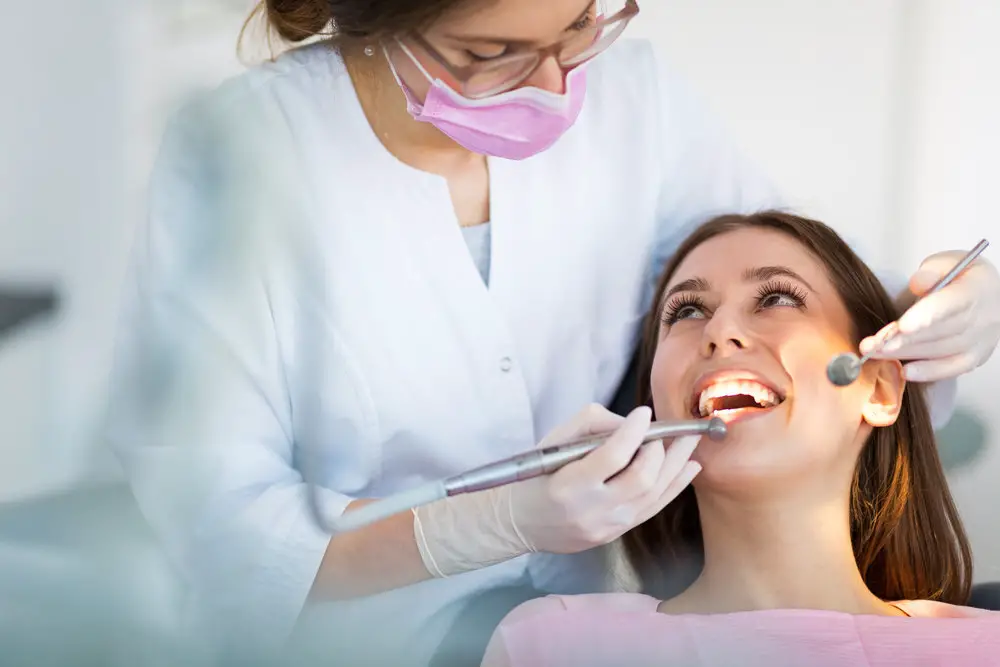
Bonded teeth are susceptible to staining, which can be caused by a variety of factors including smoking, drinking coffee or tea, or consuming foods that are high in pigment. While there are many over-the-counter products available to help remove these stains, professional treatments can offer a more effective and long-lasting solution. Some of the most popular professional treatments for removing stains on bonded teeth include teeth whitening, dental bonding, and veneers. Teeth whitening is a popular professional treatment for removing stains on bonded teeth. This procedure involves the use of a bleaching agent that is applied to the surface of the teeth to whiten them. In-office teeth whitening treatments can be completed in just one visit and can provide immediate results. Alternatively, take-home whitening kits can be prescribed by a dentist and offer a more gradual, but equally effective, whitening process. Dental bonding is another professional treatment that can be used to remove stains on bonded teeth. This procedure involves the application of a tooth-colored resin material to the surface of the teeth to improve their appearance. Bonding can be used to correct a wide range of cosmetic issues, including stains, cracks, and chips. Finally, veneers are a popular option for those looking to remove stains on bonded teeth. These thin shells are custom-made to fit over the front of the teeth and can be used to cover up a variety of cosmetic issues, including stains, chips, and gaps. Veneers are a long-lasting and natural-looking solution for those looking to improve the appearance of their teeth.
Teeth whitening treatments are an effective way to remove stains and discoloration from teeth. There are several options available, including in-office treatments and at-home kits. In-office treatments are typically more expensive but can provide quicker and more dramatic results. At-home kits are more affordable and can be more convenient for those with busy schedules. However, it is important to follow the instructions carefully to avoid damaging the teeth or gums. It is also important to note that teeth whitening treatments may not be effective for all types of discoloration and stains. It is best to consult with a dental professional to determine the most appropriate treatment option for each individual case.
Composite bonding is a popular cosmetic dental procedure that involves the application of a tooth-colored resin material to the surface of a tooth to improve its appearance. This treatment can be used to repair chipped or cracked teeth, close gaps between teeth, reshape teeth, and even cover up discolored or stained teeth. The composite material is carefully applied to the tooth and then shaped and polished to achieve a natural-looking finish. While composite bonding is a relatively quick and easy procedure, it does require some maintenance to keep the teeth looking their best. Regular brushing and flossing, as well as avoiding certain foods and drinks that can stain the teeth, can help to keep the composite material looking bright and new for years to come.
Veneers are a popular cosmetic dentistry treatment for improving the appearance of teeth. They are thin shells made of porcelain or composite resin that are custom-made to fit over the front surface of teeth. Veneers can be used to cover up a variety of dental imperfections, including stains, chips, gaps, and misshapen teeth. They are a minimally invasive treatment option that can provide a dramatic transformation of a smile in just a few appointments. With proper care, veneers can last for many years and can help patients feel more confident in their smiles. Overall, veneers are a versatile and effective solution for those looking to improve the appearance of their teeth.
Microabrasion is a non-invasive dental procedure that can effectively remove superficial stains and discolorations from bonded teeth. This technique involves the use of a fine abrasive paste and a microabrasion handpiece to gently remove the outer layer of the tooth enamel, revealing a brighter and more uniform appearance. This treatment is particularly useful for individuals who have mild to moderate staining caused by factors such as smoking, coffee or tea consumption, or natural aging. Microabrasion is a quick and painless procedure that can be performed in a single visit to the dentist or even at home with a specially designed kit. With its impressive results and minimal downtime, microabrasion is an excellent option for anyone looking to enhance the appearance of their bonded teeth.
Tips for Preventing Stains on Bonded Teeth

Bonded teeth are artificial teeth that have been applied to the surface of your natural teeth. These teeth are designed to improve the appearance of your smile, and they are often used to correct issues such as chipped, broken, or discolored teeth. However, bonded teeth are susceptible to staining, which can detract from the overall appearance of your smile. To prevent stains on bonded teeth, there are a few simple tips that you can follow. Firstly, it is essential to maintain good oral hygiene. Brushing your teeth twice a day and flossing regularly can help to keep your bonded teeth clean and free from stains. Additionally, you should avoid consuming foods and drinks that are known to stain teeth, such as coffee, tea, red wine, and berries. If you do indulge in these items, it is recommended that you rinse your mouth with water afterward to help prevent stains from setting in. Another tip for preventing stains on bonded teeth is to avoid smoking or using tobacco products. Tobacco products are known to cause discoloration of the teeth, including bonded teeth. If you are a smoker or use tobacco products, it is recommended that you quit to prevent further staining of your bonded teeth. Additionally, you should schedule regular dental checkups to ensure that your bonded teeth are in good condition and to detect any potential issues early on. Your dentist can also provide you with additional tips and recommendations for preventing stains on bonded teeth, such as using a whitening toothpaste or undergoing professional teeth whitening treatments. By following these tips, you can maintain a bright and healthy smile for years to come.
Regular dental checkups and cleanings are crucial for maintaining healthy teeth and gums. These appointments allow the dentist to detect any potential issues early on, such as cavities, gum disease, or even oral cancer. During a cleaning, the dental hygienist removes plaque and tartar buildup that cannot be removed by brushing alone. This buildup can lead to gum disease and tooth decay if left untreated. By getting regular cleanings, you can help prevent these issues and keep your teeth and gums healthy. Additionally, dental checkups and cleanings can also help you maintain a bright and confident smile by removing surface stains and discoloration caused by coffee, tea, and other foods and drinks. Overall, taking the time to schedule regular dental appointments is an important part of maintaining good oral health.
Maintaining a healthy set of teeth is a crucial aspect of oral hygiene, and avoiding stain-causing habits is an essential step towards preserving their natural beauty. Smoking, excessive consumption of coffee, tea, and soda, and neglecting oral hygiene practices such as brushing and flossing are some of the common habits that can cause stains on bonded teeth. To prevent these stains, it is recommended to quit smoking, limit the intake of beverages that can cause staining and maintain oral hygiene practices. Additionally, incorporating a healthy and balanced diet that includes fruits, vegetables, and calcium-rich foods can help strengthen teeth and maintain their natural color. By following these simple steps, you can effortlessly remove stains from bonded teeth and maintain a bright and healthy smile.
Maintaining good dental hygiene is crucial to preventing tooth decay, gum disease, and other oral health problems. Brushing twice a day with a fluoride toothpaste, flossing daily, and visiting the dentist regularly for check-ups and cleanings are essential steps to keeping your teeth and gums healthy. In addition, avoiding sugary and acidic foods and drinks, quitting smoking, and drinking plenty of water can also help maintain good dental hygiene. By taking care of your teeth and gums, you can keep your smile looking bright and healthy for years to come.
Using a straw when drinking dark-colored beverages can go a long way in keeping your bonded teeth stain-free. This is because the straw helps to bypass the front teeth, which are more prone to staining, and deliver the drink directly to the back of the mouth. Dark-colored beverages such as coffee, tea, and red wine contain chromogens that can easily penetrate the porous surface of bonded teeth and cause discoloration. By using a straw, you can minimize the contact of these beverages with your teeth, and ultimately reduce the chances of staining. So, the next time you indulge in a cup of coffee or a glass of red wine, remember to grab a straw to protect your bonded teeth from unsightly stains.
When it comes to maintaining the pearly white shine on bonded teeth, taking care of them is crucial. You can remove and prevent stains by following some simple tips and techniques. Firstly, avoid consuming foods and drinks that are highly pigmented such as coffee, tea, and red wine. If you do indulge, make sure to rinse your mouth with water afterward. Brush your teeth twice a day with a soft-bristled toothbrush and use a whitening toothpaste to keep them clean. Flossing regularly can also help remove any plaque buildup that can lead to discoloration. Additionally, using a whitening gel or strips at home can help remove any stubborn stains. Overall, it’s important to be diligent in your oral hygiene and avoid habits that can cause staining to keep your bonded teeth looking their best.
It is important to remember that sometimes, even with the most diligent oral care routine, stains on bonded teeth can still occur. If you find yourself struggling to remove these stains, do not hesitate to seek professional help from your dentist. They have the expertise and tools necessary to safely and effectively remove stubborn stains, while also providing guidance on how to prevent them in the future. Seeking professional help is not a sign of weakness, but rather a proactive step towards maintaining optimal oral health and achieving the bright, confident smile you deserve.
It’s easy to overlook the importance of dental hygiene and care in our daily routine, but it’s essential to prioritize it. Neglecting your teeth can result in serious consequences, such as cavities, gum disease, and even tooth loss. To maintain healthy teeth and gums, you should brush twice a day, floss daily, and visit your dentist regularly. Additionally, it’s crucial to avoid sugary and acidic foods and drinks, which can erode tooth enamel and lead to stains. By taking care of your teeth, you can not only prevent dental problems but also improve your overall health and well-being. So, make dental hygiene a priority in your daily routine and reap the benefits of a healthy smile.
Conclusion
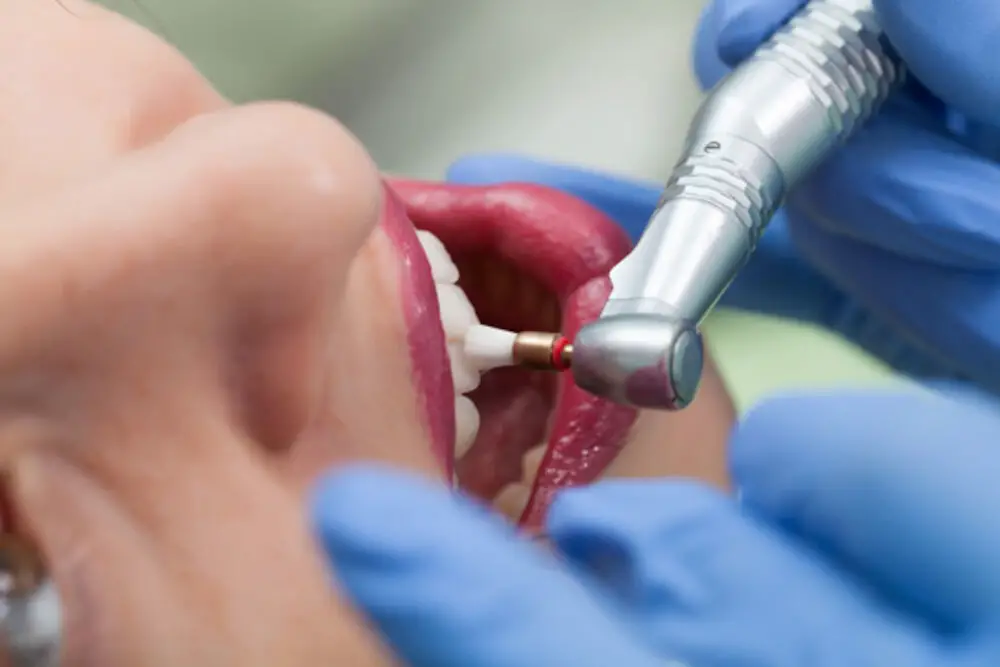
In conclusion, maintaining the appearance of our teeth is essential for our overall dental health and self-confidence. Bonded teeth may develop stains over time due to various factors, including smoking, drinking coffee or wine, or poor dental hygiene. However, with the expert tips provided, it is possible to remove these stains effortlessly at home. Whether through the use of baking soda, hydrogen peroxide, or activated charcoal, these simple remedies can help to brighten and restore the natural shine to your bonded teeth. It is important to note that seeking professional dental care is also crucial in maintaining your dental health, and regular dental check-ups should not be neglected. With regular care and attention, your bonded teeth can continue to look their best and keep you smiling with confidence.





